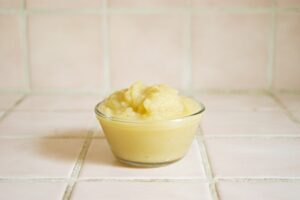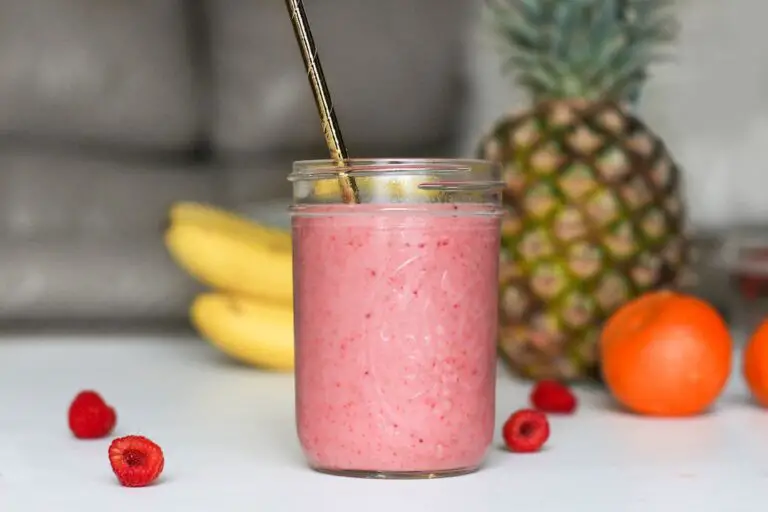What to Eat After Having a Root Canal
When I know I’m going to have a dental procedure performed, I like to know what I can and can’t eat afterward so that I can have enough of the right foods on hand. Because of this, I did some research on what to eat after a root canal.
So, what are eight things you can eat after having a root canal? You can eat applesauce, Jello, ice cream, smoothies, mashed potatoes, macaroni and cheese, scrambled eggs, and soup after a root canal. These foods are soft, which means they won’t cause pain or damage to your procedure area.
There are a few other reasons why these foods are good choices as well.
8 Foods That Are Great Options After a Root Canal Procedure
1. Applesauce
Not only is applesauce easy to eat without much effort, but it also has high nutritional value, which will help your overall recovery process. The vitamins and minerals in applesauce will help to reduce inflammation and promote healing.

2. Jello
This treat is not only delicious but it’s also packed with collagen, which is good for your gums and teeth. It’s a great choice if you’re looking for something sweet to eat after your procedure.
3. Ice Cream
This creamy treat is a good option for after a root canal because it’s soft and easy to eat. Its cold temperature can also help to numb any residual pain you may be feeling. If you do go for some ice cream, choose a flavor that isn’t too hard on your teeth, like vanilla, chocolate, or anything else that doesn’t have pieces that are hard to chew.
4. Smoothies
Smoothies are an excellent choice because they’re packed with nutrients and can be easily consumed. They’re also a great way to get your daily dose of fruits and vegetables as you heal. Choose a flavor that you know won’t aggravate your teeth, like banana or strawberry instead of more acidic fruits like pineapple or orange.

5. Mashed Potatoes
Mashed potatoes are another good option after a root canal because they’re soft and easy to eat. They’re also packed with nutrients like potassium, which can help to reduce inflammation, and their savory heartiness is filling.
6. Macaroni and Cheese
This classic comfort food is an excellent choice after your procedure if you’re up for putting in a little more chewing effort. There are some health benefits to macaroni and cheese as well: The cheese and milk are rich in calcium, which is essential for healthy teeth and bones. Plus, it’s easy to eat and extremely satisfying.
7. Scrambled Eggs
Scrambled eggs are a great source of protein, which is important for healing after a root canal. They’re also soft and easy to eat. Just make sure you don’t add too many seasonings that may irritate your procedure area.
8. Soup
Soup is another great choice because it’s packed with nutrients and can be easily consumed. It’s also a great way to get your daily dose of vegetables. Choose a flavor that you know won’t have much chewing required, like chicken noodle or tomato bisque, and be careful to let it cool before you eat, because your teeth and gums will likely be sensitive to temperature after a root canal.

These are just a few of the many options available to you when it comes to what to eat after a root canal. Be sure to talk to your dentist or oral surgeon about any specific dietary restrictions you may have, however, as they may have additional advice for you.
How to Choose What to Eat After a Root Canal
These eight foods aren’t the only things you can eat after having a root canal — they’re just some tried and true ideas to get you started.
You can eat many other foods as well, just follow these rules, along with any others your dentist may have given you.
1. Don’t eat foods that are especially hot or cold.
Even the softest foods won’t be enjoyable for you if they’re too hot or cold. Your gums are likely going to be extra sensitive after your root canal, so let your hot, gooey pizza or chocolate chip cookie get plenty cool before you bite into it.
2. Don’t eat hard foods.
Hard or even crunchy items like peanut brittle, popcorn, and chips aren’t typically a good idea after getting a root canal since they can put unnecessary pressure on your mouth and could cause discomfort.
3. Don’t eat sticky foods.
Gum and sticky candy can stick to a temporary dental crown and pull it out, so it’s best to avoid these items until your permanent crown is in place. Even if you aren’t getting a crown, sticky foods aren’t good for your new filling, and it may hurt if you have to pry them off your tooth.
4. Do eat soft foods for a few days.
Soft foods like applesauce, eggs, and mashed potatoes won’t put any unnecessary pressure on your mouth. They’re also easy to eat without putting much effort into chewing. Even if you feel like you can handle eating regularly, don’t be afraid to give your mouth plenty of time to heal by not rushing into other foods too quickly.
5. Talk to your dentist about what’s best for you.
Your dentist knows root canals better than anyone and can give you specific instructions on what to eat and what to avoid after your root canal. If you’re ever unsure about whether or not a food is okay for you to eat, it’s always best to err on the side of caution and ask your dentist before eating it.
The Root Canal Recovery Process
Root canals are a common dental procedure that is usually nothing to worry about, and most people report feeling completely back to their old selves within a week or two after having a root canal. However, it’s important to take care of your mouth during this time and follow all the instructions your dentist has given you.
If you have any pain or discomfort, be sure to take the pain medication prescribed to you. If the pain persists or gets worse, however, call your dentist right away.
You should also avoid chewing on anything hard for at least 24 hours after your procedure. This includes hard candy, ice, and nuts. Chewing on hard objects can cause the temporary filling in your tooth or your temporary crown to come out, which is not only often painful, but also requires yet another dentist appointment to fix.
Make sure you’re gently brushing your affected tooth as your dentist recommended. It’s also a good idea to avoid using any mouthwash that contains alcohol for at least 24 hours as it can irritate your gums and teeth.
If you have a follow-up appointment scheduled with your dentist, be sure to keep that appointment. This is usually about a week or two after your initial procedure. At this appointment, your dentist will check to make sure the root canal was successful and that your mouth is healing properly.
If your dentist wants to apply a permanent crown, you may also get it at this appointment.
Once you have your permanent crown in place or once your tooth is fully healed, you should be able to go back to eating as usual. Just be sure to take good care of your teeth and see your dentist for regular cleanings and checkups every six months.


